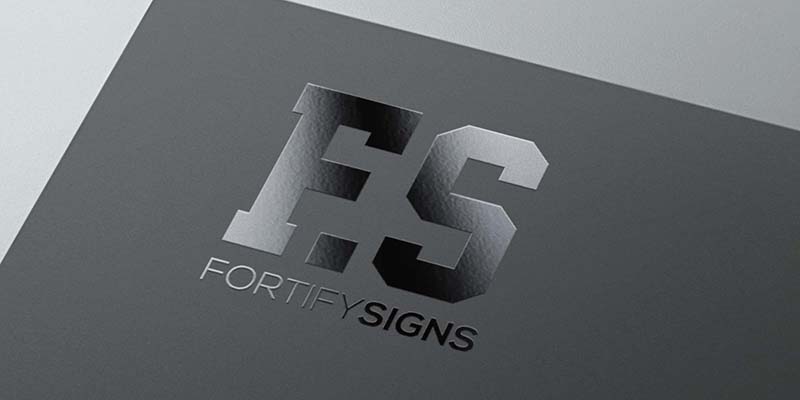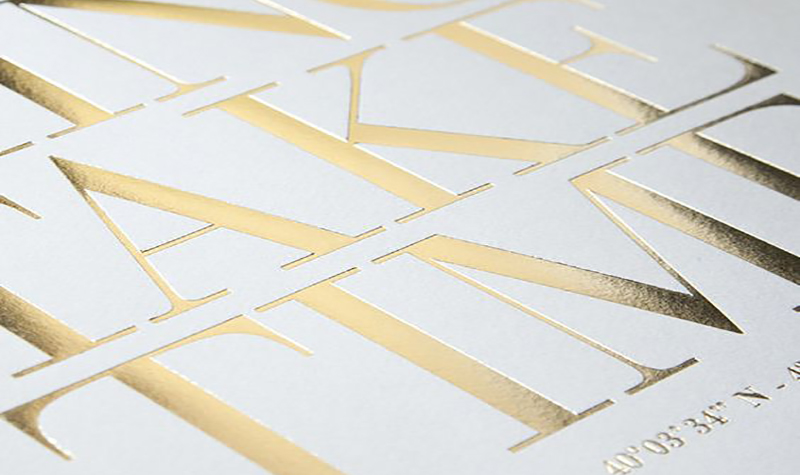With the prospect of an exciting print job in the pipeline, I got the chance to enjoy going through my print samples that i’ve been collecting over the years.
Each piece of print has been hoarded and treasured for its individuality and normally some unique print finish or paper stock. Call me a print nerd but my love for nice print comes from the belief that is not just style over substance. That it offers a multi-sensory experience for the recipient which, whether subliminal to them or not, enhances the brand.
Touchy-feely
Part of the design process is to come up with interesting and engaging formats that enhance and tell the story of your brand through the printed material.
When putting a print specification together for a brochure, considering different paper stocks, paper weight, printing techniques, only helps to connect with the customer.
Good design obviously engages with the sense of sight, but when this design is printed on a well-considered stock and with carefully chosen finishing techniques, it can engage with the sense of touch and even smell (or is that just me?)
Why consider different paper stocks?
What your brochure is printed on can make all the difference to the design and overall concept. Consider what your choice of paper stock says about your company?
Gloss, matt, silk or uncoated stock – using each gives your brand a different quality and feel. Are you a sleek glossy company or an eco-friendly uncoated sort of company?
What is in a weight?
Imagine the different impressions you get when a potential client gives a flimsy 200gsm* business card versus a luxurious heavy-weight 600gsm* card.
*gsm stands for Grams per Square Metre. In the printing industry you’ll most commonly find: 55gsm, 90gsm, 100gsm, 120gsm, 140gsm, 210gsm, 250gsm, 300gsm, 350gsm and 400gsm. The higher the GSM number, the heavier the paper.
Other than the durability in a wallet – the heavy-weight card suggests a professional strong company that takes pride in their appearance and are well and truly here to stay.
The card is something to keep and to be treasured and often leaves a lasting positive impression. The opposite may crease and ‘fold’ in a second and what does that say about a business?
So, 400gsm or higher is more like a board than paper. in comparison newspapers are printed on 35-55gsm stock.
What are some of the most common (and affordable) print and finishing techniques used today?
Lamination: Silk lamination provides a soft, silk-like finish, is water-resistant, is tear-resistant, and complements vibrant colours. The effect could be glossy, matt, or satin.
Varnishes: A varnish is a liquid coating applied to a printed surface to add a clear glossy, matte, satin, or neutral finish. UV (ultraviolet varnishing is a process for achieving an even more striking coating.

It may be used through-out or as a ‘spot UV varnish’ where the varnish is applied to chosen areas to highlight or drawn attention to parts of the design
Embossing/debossing: Embossing creates a raised impression on the stock, debossing creates a depressed impression. It leaves a classy subtle effect that is seen on both the front and back of the stock.
Foil: A foil layer is bonded to a certain material by a heating process. Foil comes in many block, metallic and pearlescent colours.

Die-cutting: Die-cut involves cutting irregular shapes out of paper or board using a die. Dies are normally custom made, but printers usually have some standard dies (such as for rounded corners).
Letterpress: A surface with raised letters or pattern is inked and pressed down to reproduce an image in reverse on the material (think of a glamorous version of potato printing!)
Very popular at the moment and often used for wedding/party invitations and on small print runs.
Silk screening: Normally not within budget but a technique that uses a woven mesh to support an ink-blocking stencil. The stencil forms opens areas of mesh that allows the ink to transfer through to the paper or board.
These finishes give a print job that individuality and that WOW factor and encourages your clients to want to keep it safe and enjoy it (instead of adding it to the recycling).
Maybe you could consider some of these techniques for your next print project?
Happy spec’ing!
